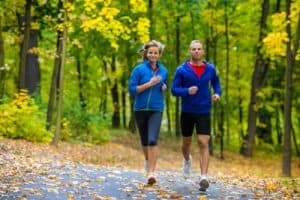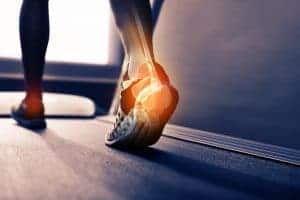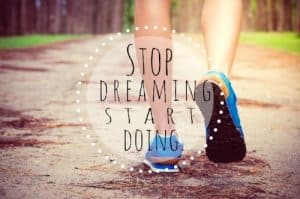Walking Benefits -Get the Most out of Walking

Benefits Of Walking
Relieves joint discomfort
Walking can help protect your knees and hips, as well as your joints. Because it lubricates and strengthens the muscles that support the joints, it is beneficial.
Walking may also provide health benefits for those with arthritis, such as pain relief. Furthermore, walking 5 to 6 kilometers every week may assist to prevent arthritis.
Boost Circulation
Walking helps to prevent heart disease by increasing heart rate, decreasing blood pressure, and strengthening the heart.
In just 24 weeks, postmenopausal women who walk one to two kilometers each day can drop their blood pressure by approximately 11 points.
Women who walk for 30 minutes a day reduce their risk of stroke by 20%, and by 40% if they increase their pace.
Improves Mood
Walking is beneficial to your mental health. It has been shown in studies to aid with anxiety, depression, and a bad mood. It can also help with self-esteem and social withdrawal symptoms.
Aim for 30 minutes of brisk walking or other moderate-intensity exercise three times a week to reap these benefits. It’s also possible to divide it into three 10-minute walks.
Improves Breathing
Walking causes your respiratory rate to increase. This forces oxygen to travel faster through your bloodstream, assisting in the elimination of waste products and improving your energy and healing potential.
Walking Injuries
Since walking is not an extremely aggressive activity, many people do not automatically associate walking with injuries. And while, to a certain extent this belief is correct (you don’t see a lot of concussions or broken bones as a result of walking) injuries can and do still occur. The most common walking injuries are:
Shin Splints
- Patellar Tendonopathy
- Patellofemoral pain syndrome
- Stress Fracture
- Achilles Tendonopathy
- Plantar Fasciitis
- Iliotibial band syndrome
- Low Back Pain
- Ankle Sprains
- Interdigital Neurom (Morton’s Neuroma)
Selecting the Right Socks
In addition to picking good shoes, you should also select good socks for your level of activity. When choosing a sock you should make sure that the socks you wear are made from a breathable and lightweight material. They should also fit snugly. Consider wearing two pairs of socks if you are prone to blistering. This can reduce friction on your skin, which causes blisters. It is recommended that your inner pair of socks be made of a synthetic moisture wicking material. The outer layer can be either made of synthetic materials or cotton. By doubling up on socks you are encouraging the friction to occur between the two sock layers. This is preferable to friction between the sock and your skin.
Blisters
If you are developing a hot spot (an area of potential blister soreness) it is imperative that you treat it right away. Immediately treat the area to help reduce the risk of developing a blister. Save yourself from walking long distances in pain.
Do I need Walking/Hiking Poles?
While they are not necessary, many experts highly recommend using walking or hiking poles when walking. They can be particularly useful if you walk frequently. Especially if you engage in hill walking, walk for long distances or have existing knee or ankle injuries. It is always better to use two poles rather than just one.
Hiking poles work by reducing the strain on the body. They are particularly effective when walking downhill. Although, when walking uphill they also help transfer a percentage of your body weight and muscle requirement to your upper limbs. This takes the totality of your body weight off of your lower extremities. Hiking sticks take some of the body load off your legs and feet, using them also increases your stability. By using hiking sticks when walking, you decrease your chances of taking a fall. This results in less trauma to the bones, joints, muscles and tendons. If you are in the habit of using your poles in an aggressive fashion to plant and pull your body. This will increase the amount of calories you burn. This provides a better workout to your upper body.
Choosing Hiking Poles
There are a wide selection of hiking poles available for purchase in sporting goods and adventure stores. They will vary widely in price and in quality. The kind of hiking or walking you plan to do will help you decide which poles will best suit your needs. When shopping, check with a knowledgeable employee. His or her product knowledge is invaluable when deciding on which walking poles best match your individual situation. Some general suggestions are:
- The hand grip should be comfortable. You should be able to comfortably relax your grip with your wrist in its natural resting position. If you have to strain any of your fingers, hand or wrist to grip the pole, your hand will fatigue more quickly and you are more likely to pull or strain something.
- The strap that goes around your wrist should be short enough so that your hand doesn’t slip out during your normal movement. It should also be loose enough for you to slip your hand out quickly when needed.
- If you plan to use your poles only for fitness walking, you do not need to purchase adjustable poles. Poles that adjust are generally heavier and if the adjuster isn’t properly tightened, can collapse leading to a possible injury.
- Poles with adjustable lengths are useful if you are trekking in terrains with extreme ups and downs.
- On some models, you can switch out the tips to maximize the effectiveness of the poles. If you are planning on walking on a variety of surfaces you can add rubber tips for walking on cement or baskets for walking on soft ground.
Walking Benefits
Pedometer
Many physical trainers recommend a pedometer if you plan to become a serious walker. Pedometers use a variety of techniques to measure your body motion. These data points are calculated to get a reading for the number of steps you take. Depending on many factors, such as their design as well as additional features, pedometers can vary widely in price. Accuracy is the most important feature of any pedometer. What good is it if it cannot provide an accurate measure of the number of steps you’ve taken? Disappointingly studies have shown that many pedometers are the least accurate when measuring movements at slower speeds—slower than approximately 3 mph or 4.5 kmph. This is right around the average walking speed.
Consequently, if you are a serious walker, it is worth investing in a modern pedometer with enhanced technologies that improve the accuracy of its measurement. The most accurate pedometers use a multi-faceted system to more reliably detect your overall body movements. An accelerometer is a small chip that measures changes in movement. Pedometers that use accelerometers do not depend on the angle of or the position of the pedometer. Tilt measurements is what is used in traditional pedometers that are worn on the hip. They detect hip flexion. When shopping, make sure to tell the store clerk that you plan to use your pedometer for walking rather than running. This way he or she can assist you in choosing the most accurate pedometer within your price range as possible.
How does walking affect sleep quality and patterns?
Walking can positively influence sleep quality and patterns through various mechanisms:
1. Stress Reduction: Regular walking is associated with reduced stress and anxiety levels. Lower stress levels contribute to relaxation, making it easier for individuals to unwind and prepare for better sleep.
2. Circadian Rhythm Regulation: Exposure to natural light during a walk, especially in the morning, helps regulate the circadian rhythm. This can improve the body’s natural sleep-wake cycle, leading to more consistent and restful sleep.
3. Melatonin Production: Exposure to daylight, particularly in the morning, stimulates the production of melatonin, a hormone that plays a crucial role in regulating sleep-wake cycles. Regular walking can help synchronize melatonin release with bedtime.
4. Physical Fatigue: Walking is a moderate-intensity aerobic exercise that contributes to physical fatigue. Engaging in regular physical activity, like walking, can enhance the body’s need for recovery, promoting a deeper and more restorative sleep.
What are the benefits of walking for pregnant women?
Walking can offer several benefits for pregnant women, including:
- Improved circulation: Walking helps promote better blood flow, which can reduce the risk of varicose veins and swelling in the legs and feet, common issues during pregnancy.
- Maintaining a healthy weight: Walking is a low-impact exercise that can help pregnant women manage their weight gain, which is important for overall health and can make it easier to return to pre-pregnancy weight after giving birth.
- Reduced risk of gestational diabetes: Regular physical activity like walking can help reduce the risk of developing gestational diabetes, a condition that can occur during pregnancy.
- Improved mood: Walking can help reduce stress, anxiety, and depression, which are common during pregnancy due to hormonal changes and other factors.
- Better sleep: Regular physical activity, including walking, can help pregnant women sleep better at night and reduce insomnia.
- Preparation for labor: Walking is a gentle way to stay active and can help strengthen the muscles needed for labor and delivery.
How does walking impact creativity and problem-solving skills?
Walking can have a positive impact on creativity and problem-solving skills in several ways:
- Increased blood flow to the brain: Walking increases blood circulation, including to the brain, which can enhance cognitive function, including creativity and problem-solving.
- Stress reduction: Walking can help reduce stress, which can often inhibit creative thinking and problem-solving. A relaxed mind is more open to new ideas and solutions.
- Enhanced mood: Physical activity, such as walking, releases endorphins, which are known as “feel-good” hormones. A better mood can lead to more creative thinking and improved problem-solving abilities.
- Mindfulness and mental clarity: Walking can promote mindfulness, allowing you to focus more clearly on your thoughts and ideas. This mental clarity can lead to more creative insights and better problem-solving.
Pedometers that Measure Distance
Some pedometers also have the ability to measure distances. This can be very useful in accounting for the total distance that you have walked. In order to do this you will need to enter the average length of your stride. Some other additional features could include an estimation of calories burnt, a countdown and lap timer, melody pacers and heartbeat monitor. Just like with the step counter, the measurement of the additional features may not be completely accurate. Do some research before buying. Not all of the added features will be required for your individual situation. Talk to a knowledgeable salesperson before spending money on something that you don’t need. Buying a sturdy pedometer that can accurately calculate the number of steps you take is obviously the most important feature. It should therefore be your top priority when choosing one.


